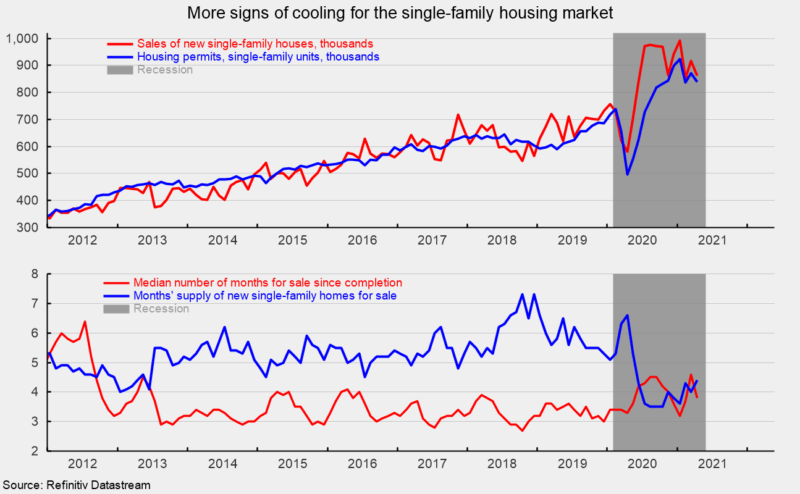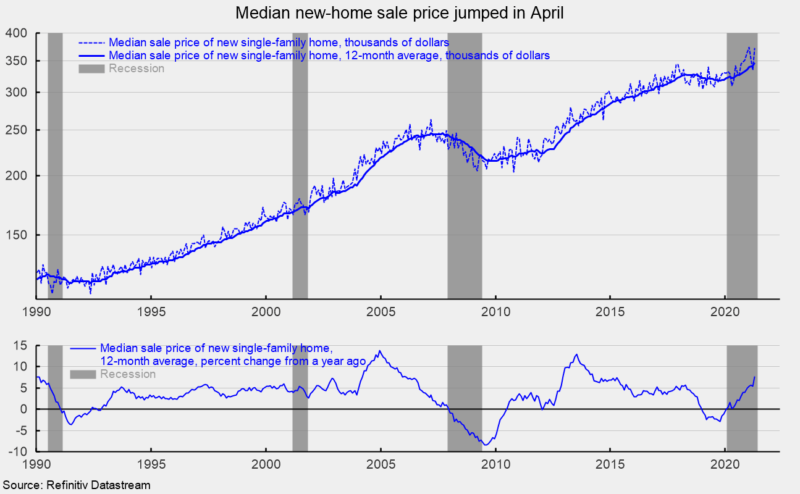New Single-Family Home Sales Decline in April
Sales of new single-family homes fell in April, decreasing 5.9 percent to 863,000 at a seasonally-adjusted annual rate from a 917,000 pace in March. Sales are still up 48.3 percent from the year-ago level but have fallen in five of the last nine months (see top of first chart). Weakness over the last few months in sales of new single-family homes is consistent with signs of slowing in the market for existing single-family homes as well (see top of first chart).
Sales of new single-family homes were down in three of the four regions of the country in April with declines in the Northeast, the South, and the Midwest but a 7.9 percent gain in the West. From a year ago, sales are still up in all four regions: 46.7 percent in the Midwest, 61.2 percent in the South, 100.0 percent in the Northeast, and 11.6 percent in the West.
The total inventory of new single-family homes for sale rose 3.9 percent to 316,000 in April, leaving the months’ supply (inventory times 12 divided by the annual selling rate) at 4.4, up 10.0 percent from March but 1.6 percent below the year-ago level (see bottom of first chart). The median time on the market for a new home fell in April, coming in at 3.8 months versus 4.6 in March.
Recent headwinds for the housing market include somewhat higher mortgage rates and elevated home prices. The average rate of a 30-year fixed-rate conforming mortgage was 3.06 percent in April, down from 3.08 in March but up from a low of 2.68 in December. The median sales price of a new single-family home was $372,400 (see top of second chart), a 7.8 percent gain from a year ago (see bottom of second chart).
The combination of high prices and rising mortgage rates will hurt affordability and likely contribute to additional slowing in housing activity in the future. It is likely that in time these conditions will significantly impact the overall housing market, but for now it remains reasonably robust with strong demand, tight supply, and rising prices.







